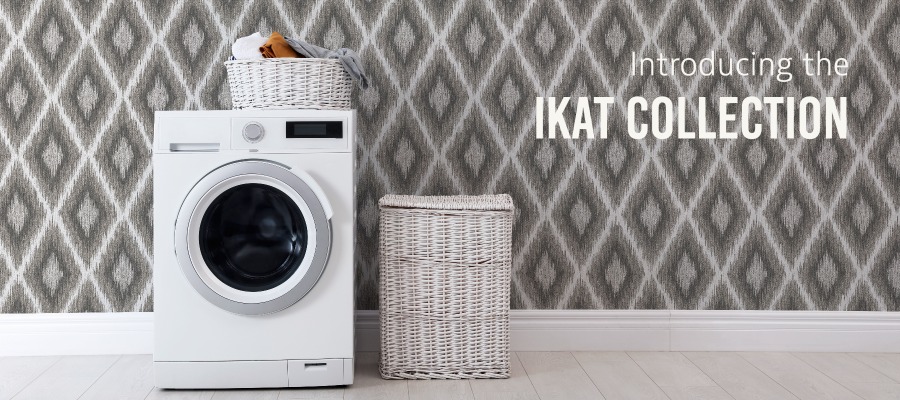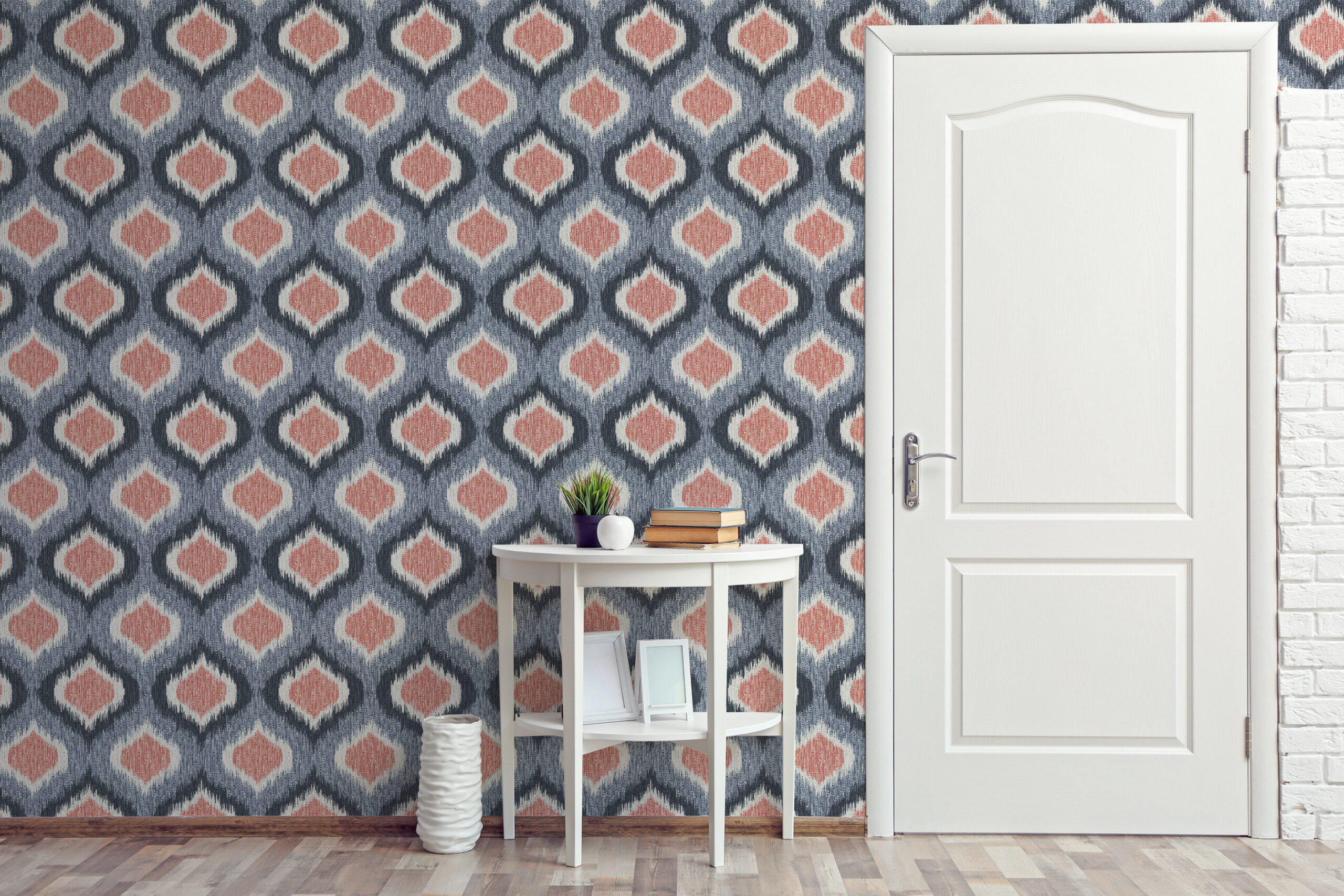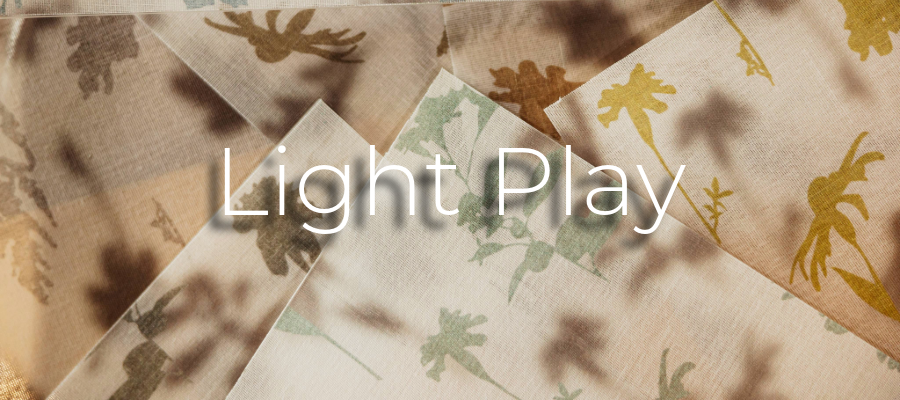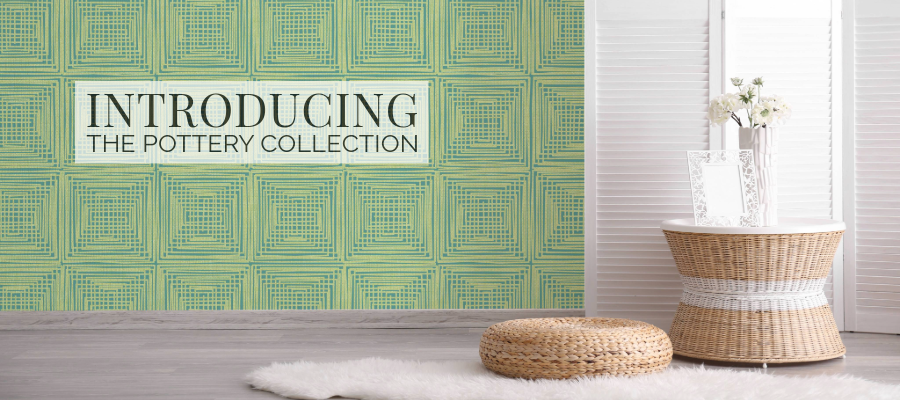
The New Ikat Collection by Design Pool
The Ikat Collection, designed entirely by Kristen Dettoni, is new in the Design Pool licensable library. This new collection is inspired by the resist dye technique known as ikat and the beautiful textiles it produces.
But first, what is ikat?
To describe ikat in the simplest of terms, it’s a resist dye technique. However, unlike other shibori techniques, ikat is not done to fabric but to the yarn before it is woven. In her book Ikat, Lydia Van Gelder describes ikat in more detail as “the process of wrapping or binding off sections of yarn to resist the dye during dyeing, before the textile is woven. This wrapping or binding off may be done on yarn to be used for the warp, the weft or both. The unwrapped areas of the yarn absorb the dye, while the wrapped sections remain undyed.” (You can see photos of this process in another blog post about ikat.)
The word ikat comes from the Malay-Indonesian verb mengikat, which means to bind, tie, or wind around. This process is incredibly laborious and requires a high level of skill and knowledge of fabric construction and dyeing.

Ikat fabrics can be extremely intricate and detailed or relatively simple and bold. In any iteration, they are always visually stunning. In the classic book, The Dyer’s Art, Ikat, Batik, Plangi, Jack Lenor Larson explains what makes the feathered edges seen in ikat fabrics. “Characteristically, the color areas of ikat patterns fuse and feature in the direction of the ikat-dyed yarns. In part, the effect arises from differences in penetration of the dye wicking under the edges of the resist bindings. Since it is difficult to avoid shifting the yarns out of position when stretching them on the loom, or during the actual process of weaving, yarn displacement also affects the profile of the pattern join.”
Where did ikat originate?
This soft, feathered effect is inevitable and the appeal of ikat. Yet, in some cultures, the precision of their ikat is what makes them so prized, and they go to great lengths to minimize this effect. In others, though, people want the effect exaggerated to maximum effect.
It is clear that wherever ikat fabrics are made, they are highly valued. Nearly every culture around the world has examples of ikat fabrics. Due to the laborious process and the high level of expertise required to make them, these textiles are often reserved for special occasions, ceremonies, and religious events. In some cultures, they are reserved for the upper classes, given as bridal gifts, or used to wrap the dead. In Bali, they are even thought to possess healing qualities. Everywhere though, they are special.
As with many textile techniques, examples of ikat are found worldwide. Historians believe ikat developed independently in three main areas around the world, Asia, India, and Egypt. From these centers, the skill spread across the globe. Techniques vary widely depending on the types of looms, fibers, and dyes available in a particular part of the world and the knowledge passed from craftsperson to craftsperson in a region. For example, in Indonesia, ikat was usually created on relatively short warps and woven on a backstrap loom. However, they made long warps in India and wove them on more complicated, multi-harness looms.
Design Pool’s Ikat Collection
Our new Ikat Collection is inspired by this technique and the beautiful textiles it produces. Kristen was first introduced to resist dyeing as a kid in the late 70s, the same way many kids were, by tie-dyeing old t-shirts with RIT dye in bright colors. It was a fun way to experiment with color and create some genuinely unique garments at the same time. Later, in college, Kristen experimented with different shibori techniques and made some ikat warps for projects.
The beautiful watery effect of the finished textiles captured Kristen’s imagination then and now. Her goal was to create a collection of patterns for Design Pool with a similar effect but accessible for printing. The thirteen patterns in this group have mostly soft edges and lots of texture. She used the scribble effect in Illustrator to create edges that mimic traditional ikat. Then she added another layer of texture to the shapes to give the illusion of woven cloth. These patterns put a modern spin on ikat by highlighting the texture on simple, bold motifs.
You can start using these patterns today by visiting the licensable library.
Sources:
Ikat, by Lydia Van Gelder
The Dyer’s Art: Ikat, Batik, Plangi, by Jack Lenor Larson with Alfred Buhler Bronwen and Garrett Solyom
Share this post
Author
DESIGN/COLOR TRENDS AND AWESOME INFORMATION IN YOUR INBOX
Sign up for our monthly trend letter








